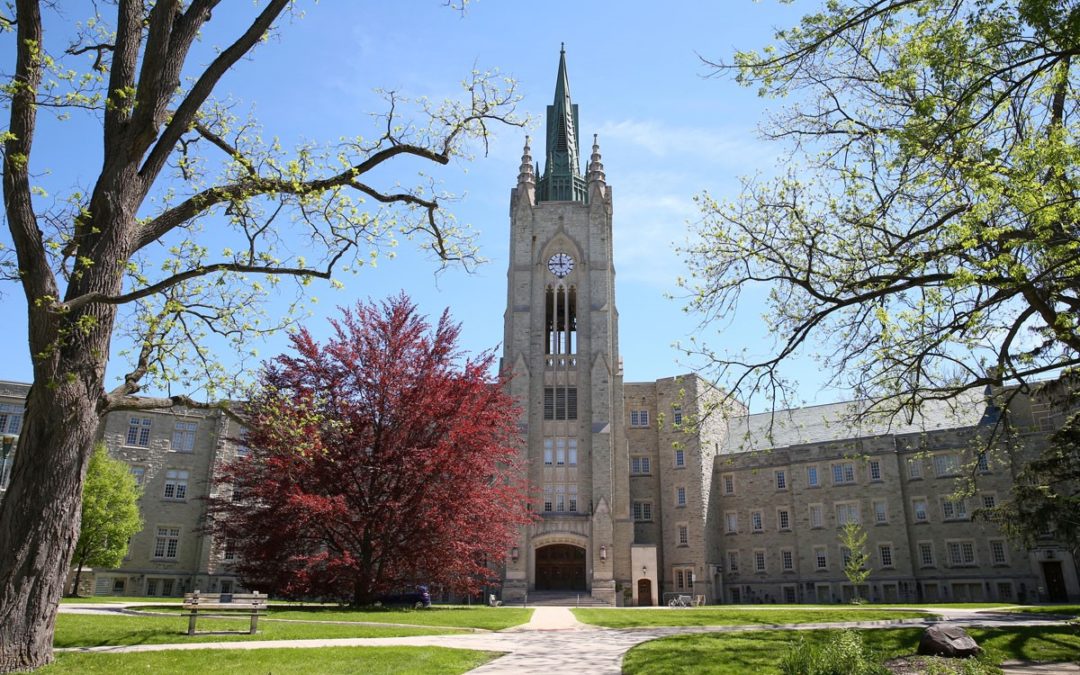One of the aspects of planning the excavations of the Draper Site in 1975 was negotiating a contract between The University of Western Ontario and  the National Museum of Man, since the museum had obtained funds from Transport Canada to support the excavations.
the National Museum of Man, since the museum had obtained funds from Transport Canada to support the excavations.
In negotiating these contracts, the university had a policy indicating it was to receive a portion of the funds as overhead to administer the contract. In my discussions with the University Research Office, we agreed that 20% of the contract funds would be allocated for overhead, an amount totaling $36,000. The Research Office also indicated to me that half of these funds could be allocated to the Department of Anthropology, and a portion of those funds could be used by me to hire a part-time secretary to help with the administration of the project.
When I discussed this with the Chair of the Department of Anthropology, for some reason unbeknownst fully to me, he firmly advised that I would not receive these funds even though the Research Office had indicated otherwise. Realizing the imminent need for these funds, I visited the Assistant to the President of the University with whom I had worked with before developing a plan to revitalized Wilfrid Jury’s Museum of Indian Archaeology and Pioneer Life. No sooner had I left the Assistant’s office, he called the Dean of Social Science and told him, in no uncertain terms, that I was to receive $9,000 to hire a part-time secretary. The Dean then called the Chair of Anthropology and reiterated the directive from the Office of the President. The Chair had no alternative but to allocate these funds; and, as a result, he divested himself of all involvement in the project and passed his responsibilities on to one of the faculty members who was greatly displeased at having to take time from his research to undertake these administrative duties.
When I returned from the field in the fall of 1975, the Acting Dean of Social Science, another member of the committee exploring the revitalization of the museum, took me for a walk around campus and indicated that there was no future for me in the Department of Anthropology. He had two suggestions. First, I could find a job as a faculty member at another university. Alternatively, he would arrange for me to become Executive Director of Wilfrid Jury’s Museum with the idea of revitalizing it as a University research centre. The caveat was that I would have to undertake this job without a university salary.
I had just spent a considerable amount of time developing computer programs to process archaeological data which could not be easily transferred to another university. Thus, at 29 years of age, and with no dependents or significant debt, I decided to sign a three-year contract to become Executive Director of the Museum without a salary, perceiving this to be a wonderful opportunity. It provided a unique chance to develop a research museum building on the lifetime achievements of Wilfrid and Elsie Jury. It was the right move and it worked for more than 20 years, at which time another faculty member on campus decided to take control of the museum and force me into early retirement. Another life-changing event, which ultimately lead to another incredible opportunity to significantly expand my exploration of Ontario’s rich archaeological history.
As a note of interest, during my time as Executive Director, the Wilfrid’s Museum was located in Middlesex College on The University of Western Ontario (now Western University) campus, pictured above. More on this in a future blog.
In closing, there is wisdom in not struggling too long about change. Embracing new uncharted territory enhances our journey on all levels and, in a way, pushes us to use more of our experience and skills for the greater good. My 50-year-plus career has been rich beyond measure and, to this day, I am grateful for that signed job offer to revitalize Wilfrid’s Museum.
I am thoroughly enjoying the opportunity to impart my learnings and archaeological findings with the public for all to benefit. Ontario’s history is fascinating. I am scheduling speaking and book reading / signing dates for the fall which may be of interest to educational or special interest audiences. Discounted pricing for volume purchasing is also available. I’d be happy to answer any questions you might have, and I can be reached most easily by email (click here to contact me directly).
Thanks kindly for your time and ongoing curiosity.
Sincerely,
Bill Finlayson
Ontario’s Leading and Senior-Most Archaeologist and Author
Founder of Our Lands Speak Book Series and Occasional Papers in Ontario Archaeology
All rights reserved. The use of any part of this publication reproduced, transmitted in any form or by any means, electronic, mechanical, photocopying, recording, or otherwise, or stored in a retrieval system, without the prior written consent of the author and publisher is an infringement of the copyright law. To that end, every attempt has been made to give proper acknowledgement, and access appropriate permissions for quotes. Any oversights are purely unintentional. In the unlikely event something has been missed, please accept our regret and apology, and contact us immediately so we can investigate and rectify as needed. All of the quantitative factual information is recorded in various published and unpublished sources and can be provided upon request.
